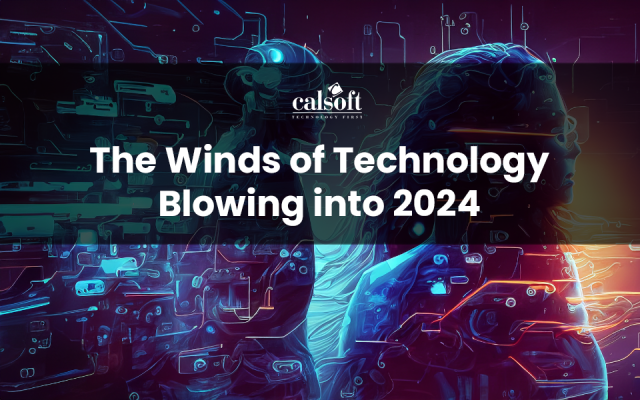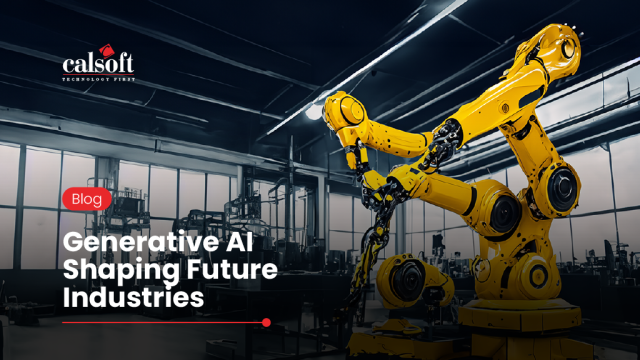As stated by McKinsey, a single application in the year 2000 was running on a $25,000 server while the same application would now be running smoothly on a $5,000 server (along with 10 or more applications).
This has been the transformational power of the public cloud infrastructure. It has enabled enterprises to scale up their computing resources while reducing their overall IT budget. In these times, enterprise CTOs can now opt out of “traditional” infrastructure systems that fail to provide consistent business utility and value.
The emergence of major IaaS cloud platforms such as Microsoft Azure and AWS has been a significant cost-saver for many organizations allowing them to move away from onsite data centers. Having said that, enterprise CTOs still find it challenging to implement a cloud-driven IaaS due to a variety of reasons.
Here is what enterprise CTOs must understand about IaaS to fully leverage its capabilities. Let us start with its benefits.
Benefits of IaaS for Business Enterprises
When it comes to regulated and mission-critical applications, the IaaS cloud platform offers more flexibility and control over the underlying technology. On the other hand, the SaaS platform is more suited for everyday applications that require minimum technical intervention.
Here are 4 of the major benefits CTOs can leverage from an IaaS cloud platform:
1. Scalability
For CTOs looking to scale and customize their IT infrastructure requirements, there are few better alternatives than IaaS-hosted cloud infrastructure. Cloud platforms such as Microsoft Azure enable businesses to dynamically increase (or reduce) their storage space and computing power according to the prevailing demand.
By paying a fixed monthly fee, organizations can improve their computing power through setting up virtual machines (or VMs), developing microservices, and developing cloud-scalable applications. Sid Nag of Gartner talks about the “ability to scale cloud models to achieve cost efficiency and business continuity.”
2. Shorter Time-to-Market
Companies that have adopted the IaaS cloud model have reported that they can shorten their product development cycle and release new capabilities 20-40% faster than before. With the fast-evolving technologies, outdated or legacy-based IT environments (along with fixed release cycles) make it both challenging and expensive to bring about digital transformation.
At the same time, organizations can look to leverage IaaS systems to develop their enterprise applications and web apps using a range of technology tools built on .NET, Python, and Kubernetes.
3. Enhanced Security
The changed circumstances created by the pandemic and the rise of cloud computing brought data security and governance practices into focus in the year 2021. In fact, data security, privacy, and governance strategies became an integral part of every IT strategy.
Cloud-based data centers are now better placed to provide security measures that in-house enterprise systems can find difficult to match. Apart from providing secure data storage on the cloud, IaaS platforms provide CTOs with the assurance of enterprise-grade security levels through measures such as centralized detection of online threats, two-tier authentication, and the use of secure cryptographic keys.
4. High Availability
With 99.95% uptime, IaaS platforms ensure high availability amounting to a yearly downtime of just 4.5 hours. Further, IaaS-optimized apps that require the availability of over 99% can be deployed to multiple VMs that provide higher resiliency (in the event any one of them fails) along with load balancers that can distribute the high workload across VMs. Besides this, VM subsets can keep running during any planned downtime to keep the application available to its users.
Through a global network of IaaS-powered data centers, availability zones (or AZs) can be physically separated to protect the deployed VMs from any individual failure.
Despite its many benefits, most enterprise CTOs would be aware of the challenges involved with migrating workloads to the cloud IaaS environment. How should they plan to do the transition? Let us discuss that next.
Cloud IaaS migration steps that CTOs must consider
For today’s CTOs, setting up an agile cloud infrastructure is much more than selecting the right cloud platform and configuring a VM. In an interview, Chip Childers of Cloud Foundry talked about digital transformation as a process where companies need to “embrace technology strategically throughout the value chain.”
Here is what CTOs consider as the 4 necessary steps or practices for cloud migration:
1. Evaluate your existing IT landscape and applications.
According to Luis Weir of Capgemini, the first step “should always be to do an assessment of the current IT landscape and determine what is the right strategy to move the on-premises workloads.” Evaluate all your existing applications and make sure all business stakeholders are involved in the cloud migration process.
While some applications can be migrated using the “lift-and-shift” method, older applications may be more suitable as SaaS applications. Similarly, consider the “cloud-native” approach for middleware applications that could involve cloud integration and re-engineering.
2. Align the cloud migration with business objectives.
As pointed out by Walid Negm, the CTO at Aricent, organizations must “align their business goals with the benefits that the cloud brings.” This can relate to benefits such as lower operational costs, faster product releases, or higher availability.
Before commencing the migration process, CTOs should consider:
- Redesigning their enterprise infrastructure
- Designing a detailed migration plan
- Integrating with existing third-party applications, wherever applicable
3. Prioritize your cloud investments.
Neil Briscoe of Cloud Gateway defines an efficient CTO as one who “doesn’t overcomplicate” and keeps it simple. He talks about CTOs knowing their “current estate in any cloud migration” and what enterprises miss out on when the “first app moves to the cloud.”
For instance, organizations can consider the hybrid cloud model to distribute workloads across public and private IaaS clouds. This can enable organizations to optimize their operational costs in the long run by:
- Opting for specific geo-location-based pricing
- Partnering with multiple cloud providers for different cloud services.
- Containerizing all mission-critical applications.
4. Select the right technology and migration model.
As cloud migrations carry with them significant cost implications, CTOs must be cognizant of the cloud technologies and migration models that can align with a smooth transition. The use of the “wrong” technology can feed into risk factors such as data compliance, cybersecurity, and even customer experience. As pointed out by Aron Brand of CTERA Networks, “organizations should invest into cloud strategies that minimize its impact on the end-user.”
On their part, CTOs must look at the long-term benefits of the IaaS cloud model, which may seem complex and time-consuming in a shorter period. They must base their decision-making on a clear understanding of business strategies instead of simply approaching it as a technology project.
Conclusion
For enterprise CTOs, the Cloud IaaS platform offers a cost-effective, scalable, and highly available infrastructure for managing their dynamic workloads. However, to derive maximum business value from the IaaS platforms, they need to consider their existing on-premises infrastructure and running applications.
We have strived to help both small businesses and large corporations leverage their investments into cloud platforms. We can also streamline your business transition to the cloud. Want to know how we can assist you? Contact us today.






